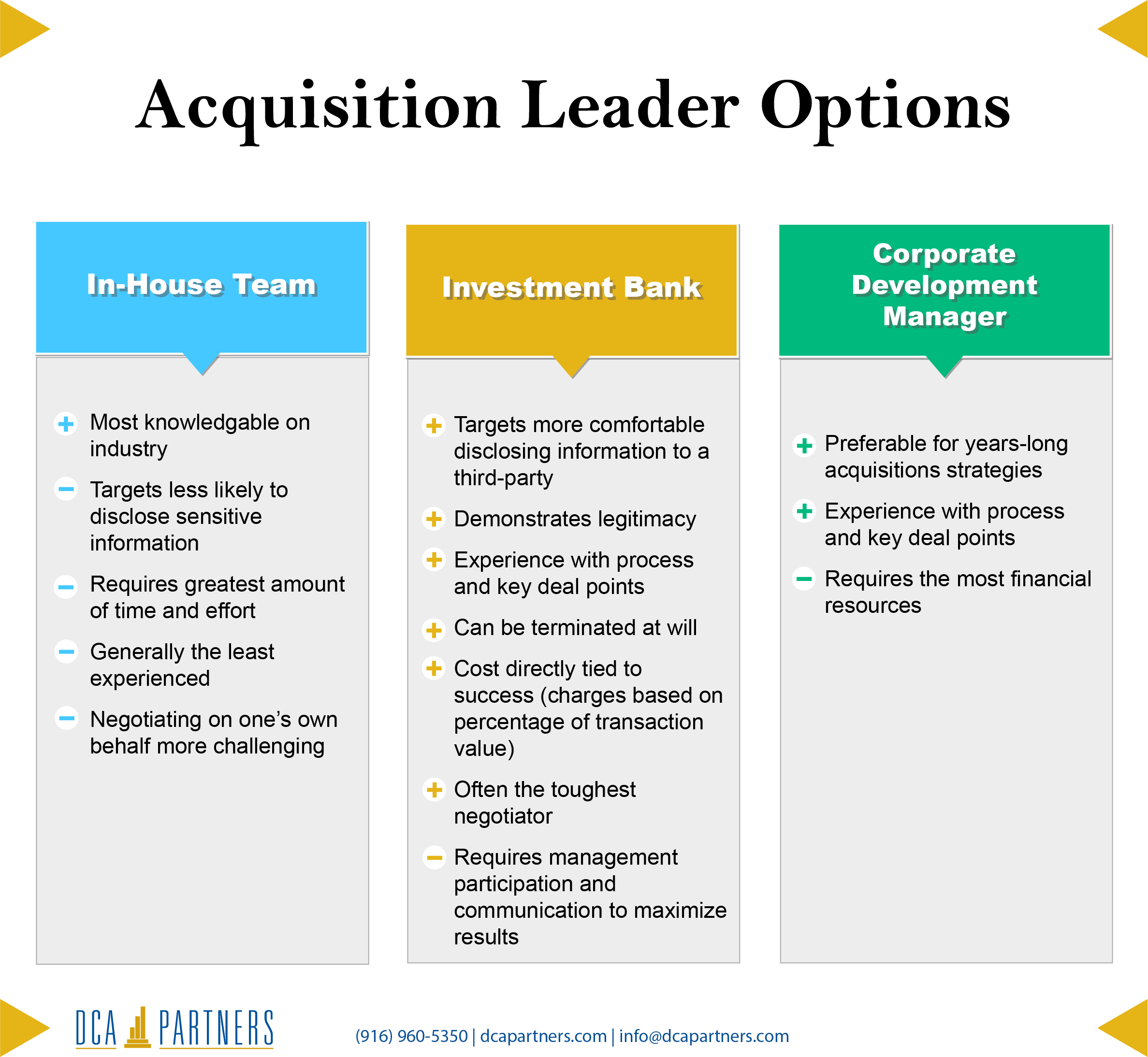Lou Holtz is well known for his quote, “In this world you’re either growing or you’re dying, so get in motion and grow.” And in markets that have experienced recent consolidation, locally, regionally, or globally, strong growth is required to build and enduring company. Yet competing with larger players is challenging through organic growth alone. Likewise, niche markets are limited—once the market is maxed out, there’s little potential for growth, or there is only slow growth, available in that space. In these and similar cases, acquiring complementary businesses that leverage your company’s core competencies is likely the best approach.
It is important that the resulting acquisition be strategic. Too often, companies make acquisitions based on a tempting price tag, and then try to identify synergies or cost savings from a scattered integration process. The reverse is a best practice: identify the long-term strategy from the outset and seek out acquisition targets that fit into those goals. This method saves the acquirer time, headaches, and a lot of money in the long run.
When it comes time to execute the strategy, one of the first decisions will be determining the acquisition team leader. The acquisition process is typically led by one of three parties: an improvised in-house team, a corporate development manager, or a third-party advisory firm/investment bank.
When considering an in-house team, carefully examine the following: Will your acquisition targets disclose their financial information directly to you, a competitor? Can your personnel dedicate time and effort to assignments such as building a target list and undertaking due diligence? Are the process and key deal points thoroughly understood? Such elements are the difference between securing a deal and securing the best deal. Most companies can’t afford to get it wrong when it comes to such a high-stakes endeavor; consider these questions honestly and ensure all parties have appropriate buy-in to execute.
Hiring a corporate development manager may be favorable for a company that plans to commit several years to multiple strategic acquisitions. Unsurprisingly, this option requires the most ongoing financial and managerial resources, such as salary, performance bonuses, health care, office space, and other staffing costs. A key player on the leadership team must also possess the expertise to oversee the corporate development manager.
One of the benefits of a third-party advisory firm is that it presents legitimacy and commitment to the acquisition process, demonstrates that the company is serious about making an acquisition and not just “kicking the tires”. Targets feel more comfortable disclosing financial information to a third-party firm than to a competitor directly. Additionally, advisory engagements can be terminated at will, and is therefore inherently risky than an in-house team or corporate development manager.
More often than not, the most strategic companies to acquire are the those are not currently for sale. Investment bankers are experienced negotiators with expertise in finding and engaging with acquisition targets that are not currently thinking about selling. They also provide the highest level of discretion on behalf of the company in cases where the acquirer does not want anyone to know of its activities in a certain market. This is especially common in family-owned or niche markets, in which approaching a colleague to consider selling could be uncomfortable.
While the majority of M&A deals follow a standard process, each individual deal is as unique as the companies involved. Any entity that leads the acquisitions process should exhibit the ability to understand the industry, present the client with a list of referrals, and operate with integrity.

